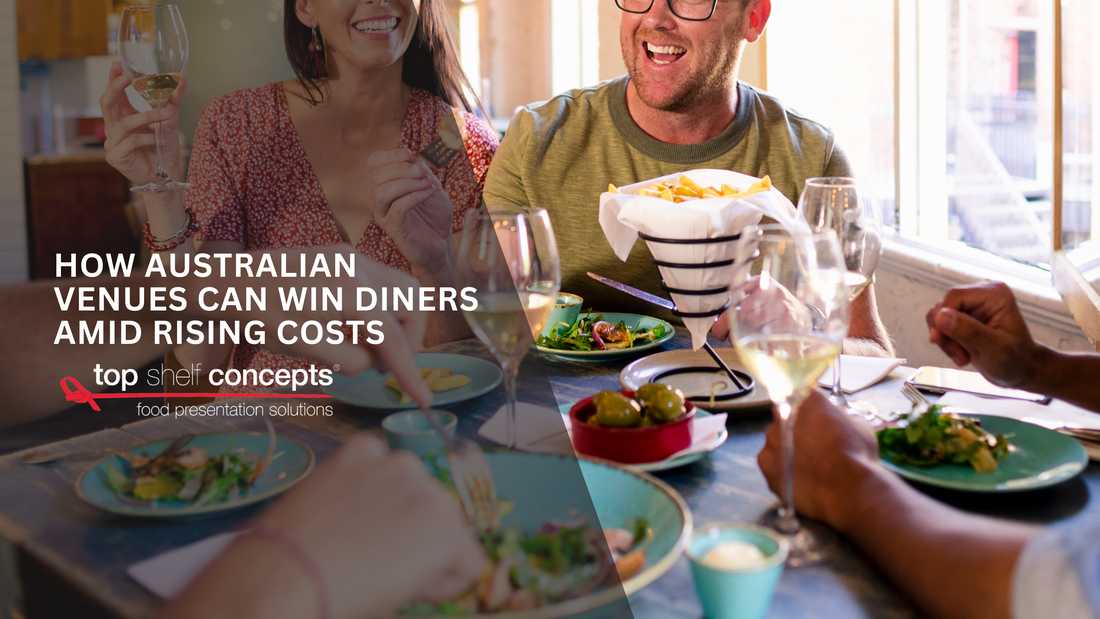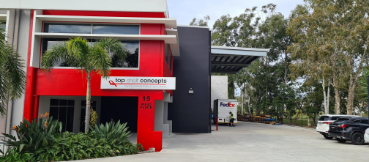With inflation and the rising cost of living shaping consumer behaviour, food and beverage businesses across Australia are facing a familiar challenge: how to provide genuine value to diners while keeping their own margins intact.
In today’s climate, affordability doesn’t just attract customers—it builds loyalty. The key lies in balancing perceived value with smart operational strategies.
The Reality of Rising Costs
According to the Australian Bureau of Statistics, food and non-alcoholic beverage prices rose by 3.3% year-on-year in June 2025, with dining out and takeaway meals being among the top contributors.
Rising rents, utilities, and supply chain costs only add to the squeeze. For the hospitality vendors, passing all these increases directly onto customers is rarely a viable strategy. Instead, they’re being pushed to rethink value propositions.
What Venues Are Doing
To stay competitive while protecting margins, many venues are adapting through creative approaches:
- Buffets

Buffets continue to attract diners because they offer a strong sense of value and abundance. Guests enjoy the freedom to sample a wide variety of dishes at their own pace, which enhances the overall dining experience. For hospitality businesses, these models—when managed strategically—provide unique advantages beyond guest satisfaction.
When paired with thoughtful food presentation—such as risers, modular trays, and portioned serving solutions—buffets can balance both visual appeal and practicality, reinforcing the perception of value while safeguarding profitability.
- Set Menus & Price Fixed Offers
Offering two- or three-course set menus at a fixed price is a strategy that benefits both operators and diners. For chefs, set menus provide tighter control over costs by limiting the number of dishes in rotation. This streamlines preparation, reduces labour demands, and enables precise inventory planning, which minimises waste and maximises ingredient usage.
- Happy Hours & Time-Based Promotions
Discounted dining windows, drink specials, and early-bird offers are proven strategies to drive traffic during quieter periods. By incentivising guests to dine earlier or outside of peak hours, venues can make better use of their capacity and generate revenue from seats that might otherwise sit empty.

For hospitality businesses, this approach maximises seat turnover and overall profitability without compromising prime-time pricing. It also helps balance kitchen workflow by spreading demand more evenly throughout service, reducing pressure on staff during peak times.
- Loyalty Programs & Value-Adds
Rather than relying solely on discounts, many venues are turning to loyalty programs and value-add strategies to foster repeat business. By offering rewards such as a complimentary appetiser on a return visit, priority reservations, or access to exclusive member-only promotions, venues can incentivise customer loyalty without eroding margins.
These programs not only encourage guests to return but also create a sense of belonging and exclusivity, deepening the emotional connection between diners and the brand.
The Role of Food Presentation Solutions
An often-overlooked lever for both value and efficiency lies in food presentation solutions. Investing in durable, versatile, and sustainable display systems not only elevates the guest experience but also delivers long-term savings.
Durability Pays Off

Investing in durable food presentation solutions delivers long-term savings for hospitality venues. High-quality trays and melamine servingware are designed to withstand the demands of daily service, from busy buffets to high-turnover events. Unlike cheaper, breakable alternatives, these products resist chips, cracks, and wear, meaning they don’t need to be replaced as often.
Beyond cost savings, durability also ensures consistency in presentation. A reliable set of servingware maintains its appearance over time, reinforcing the venue’s brand image and professionalism. Low maintenance and upkeep also improve efficiency for both staff.
Efficiency in Service

Modular equipment—such as adaptable tables, shelving, and service carts—offers venues the flexibility to reconfigure layouts quickly, depending on the event or service style. This adaptability eliminates the need for multiple specialised setups and allows staff to adjust with ease, whether transitioning from breakfast to lunch service or resetting for an evening function.
By streamlining workflows, modular systems reduce the time and effort required for setup, breakdown, and storage. The labour hours saved can then be redirected toward higher-value tasks, such as enhancing guest interactions, maintaining food quality, or elevating presentation details.
Reducing Waste

Canape dishes and airtight portion-control dispensers are powerful tools for balancing presentation with practicality. By offering food in measured portions, venues can significantly reduce waste, ensuring that every bite served is enjoyed rather than discarded.
Airtight features also keep food fresher for longer, extending shelf life and reducing the frequency of replenishment.
Sustainability Edge
Eco-friendly food presentation products are no longer just a trend—they’re becoming a standard in modern hospitality. From compostable packaging and plant-based servingware to reusable trays and bowls, these solutions allow venues to showcase food beautifully while reducing their environmental footprint.

Aligning with growing customer demand for responsible hospitality practices, sustainable presentation not only demonstrates environmental stewardship but also strengthens brand reputation. Guests are increasingly choosing venues that reflect their values, and visible commitments to sustainability—such as eco-conscious packaging or compostable canapés cups—can influence where they dine and whether they return.
Operational Improvements
Delivering value doesn’t have to mean slashing prices. Operators can improve margins through:
- Menu Engineering: Highlighting high-margin dishes, cross-utilising ingredients, and adjusting portion sizes strategically.
- Local & Seasonal Sourcing: Reducing transport costs and supporting local suppliers, while marketing “fresh and local” as part of the value story.
- Technology Efficiencies: Adopting POS systems, reservation tools, and digital menus to cut labour and waste.
- Flexible Staffing Models: Aligning rosters with actual demand to balance service quality and labour cost.
Striking the Balance
Value dining is less about the cheapest option and more about perceived fairness. Diners are willing to pay if they feel they’re getting quality, experience, and consistency in return. For venues, the future of value lies in building smarter offerings that attract budget-conscious diners without eroding profitability.
Need a hospitality supplier for all your food presentation needs? Get in touch with us for a free consultation!












